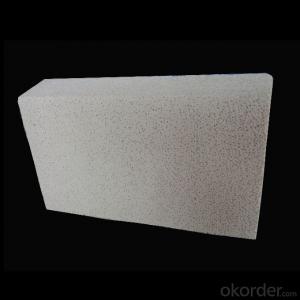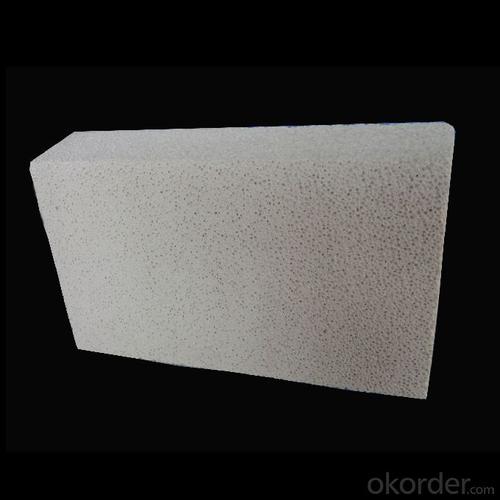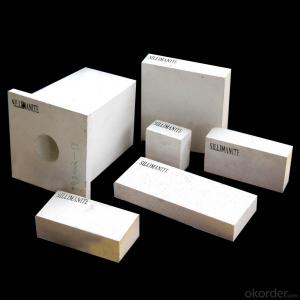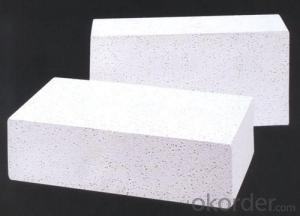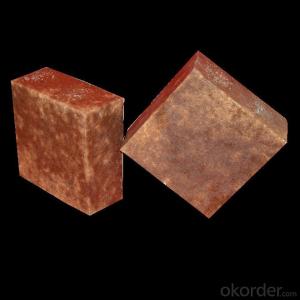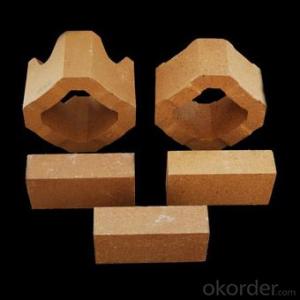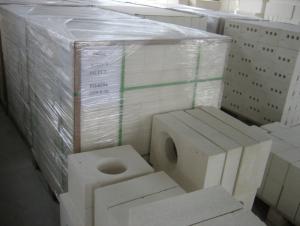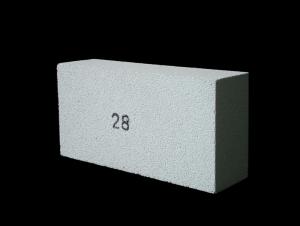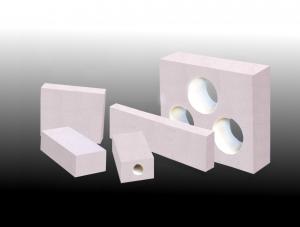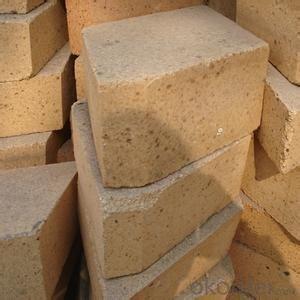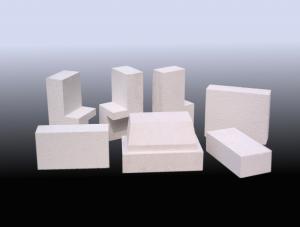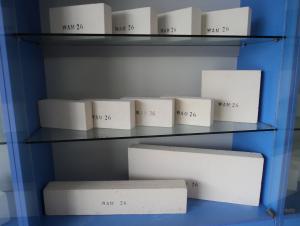Insulating Fire Brick - Refractory Aluminium Magnesium Carbon for Steel Ladle
- Loading Port:
- Shanghai
- Payment Terms:
- TT OR LC
- Min Order Qty:
- 10 m.t.
- Supply Capability:
- 100 m.t./month
OKorder Service Pledge
OKorder Financial Service
You Might Also Like
Quick Details
| Place of Origin: | (Mainland) | Shape: | Block | Material: | Alumina Cement |
| Al2O3 Content (%): | ≥60 | MgO Content (%): | ≥12 | Refractoriness (Degree): | 1770°< Refractoriness< 2000° |
| Model Number: | YH-AMC60 | Brand Name: | Bulk density: | ≥2.85 | |
| Apparent porosity: | ≤8 | C: | ≥6 | compressive strength: | ≥45 |
Packaging & Delivery
| Packaging Detail: | The refractory aluminium magnesium carbon insulating fire bricks for steel ladle is packed on wooden pallets with three layers water-proof shrink film and tightened with plastic/steel bandages,when in the transportation process,we should pay attention to moisture-proof and light handling. |
| Delivery Detail: | 7-15 working days |
Specifications
1.High temperature resistance&spalling resistance&anti erosion
2.Approved by SINOSTEEL
3.Premium service
4.ISO certificate
Refractory Aluminium Magnesium Carbon Insulating Fire Brick for Steel Ladle 
YH-AMC series refractory aluminium magnesium carbon insulating fire bricks for steel ladle are shaped by using top grade bauxite and corundum as aggregates and phenolic resin as binder and focusing on strengthen the matrix.It has the characteristics of corrosion resistance,spalling resistance,high strength,anti erosion and etc.,applicable to the ladle bottom and wall parts.
On the basis of Al-Mg-C Bricks,YH-MAC series magnesia alumina carbon bricks are strengthened the corrosion resistance and spalling resistance of materials by adjusting the process and technology,applicable to the ladle bottom,wall parts,etc.,to improve the ladle service life signigicantly.
Main Chemical Compositions and Physical Properties
| Items | Al-Mg-C Bricks | Mg-Al-C Bricks | |||||
| AMC-60 | AMC-65 | AMC-70 | AMC-75 | MAC-75 | MAC-75 | ||
| Chemical Compositions (%)≥ | MgO | 12 | 10 | 8 | 8 | 75 | 70 |
| Al2O3 | 60 | 65 | 70 | 75 | 10 | 15 | |
| C | 6 | 6 | 6 | 6 | 6 | 6 | |
| Apparent Porosity(%)≤ | 8 | 8 | 8 | 8 | 8 | 8 | |
| Bulk Density(g/cm³)≥ | 2.85 | 2.9 | 2.95 | 2.95 | 2.9 | 2.9 | |
| Compressives Strength(Mpa)≥ | 45 | 45 | 45 | 45 | 45 | 45 | |
Product Show of Refractory Aluminium Magnesium Carbon Insulating Fire Brick
Production Process of Refractory Aluminium Magnesium Carbon Insualting Fire Brick 
The production process of our refractory brick weather from the raw materials to the finished products inspection is strictly controled so that we can best service our client.laying solid foundation quality management to scientific and rational control system make high quality products.Scientific and rational control system is a prerequisite for the production of high quality refractories, Luoyang yuanhua matellurgical materials co., LTD always adhere to scientific and reasonable control to realize all-round control of production process, using the most advanced testing equipment and production equipment, strict quality control of raw materials to the finished product, put an end to the occurrence of unqualified products. In order to guarantee the high quality of the products, the company set up in the industry of advanced quality testing laboratory.
- Q: Can insulating fire bricks be used in boilers for residential heating?
- Yes, insulating fire bricks can be used in boilers for residential heating. Insulating fire bricks are designed to withstand high temperatures and provide effective insulation, making them suitable for use in boilers to improve energy efficiency and heat retention.
- Q: Can insulating fire bricks be used in the construction of crucibles?
- Yes, insulating fire bricks can be used in the construction of crucibles. Insulating fire bricks are made from lightweight materials such as clay and silica, which have excellent thermal insulation properties. This makes them ideal for applications where high temperatures need to be maintained and heat loss needs to be minimized, such as in the construction of crucibles. Crucibles are used in various industries, including metallurgy and chemistry, to hold and melt materials at extremely high temperatures. The use of insulating fire bricks in crucible construction helps to reduce heat loss, improve energy efficiency, and maintain a more consistent temperature within the crucible, resulting in better overall performance. Additionally, the lightweight nature of insulating fire bricks makes them easier to handle and install, further enhancing their suitability for crucible construction.
- Q: Do insulating fire bricks provide sound insulation as well?
- Insulating fire bricks do not primarily offer sound insulation; instead, their main purpose is to provide thermal insulation. These bricks are specifically designed to endure high temperatures and are commonly utilized in kilns, furnaces, and fireplaces to prevent heat loss. Although they may offer limited sound absorption due to their density, they are not specifically engineered or efficient in reducing sound transmission. If the main concern is sound insulation, it would be more appropriate to consider alternative materials like acoustic insulation panels or soundproofing materials.
- Q: Can insulating fire bricks be used in copper smelting furnaces?
- In the realm of copper smelting furnaces, the utilization of insulating fire bricks is indeed possible. These fire bricks have been specifically engineered to endure high temperatures and offer remarkable insulation, rendering them an ideal choice for furnace usage. Composed of materials capable of withstanding the intense heat generated during the smelting process, these bricks are proficient in both retaining and reflecting heat back into the furnace. This aids in the maintenance of the desired temperature and enhances energy efficiency. Moreover, the inclusion of insulating fire bricks can curtail heat loss, thereby resulting in swifter and more efficient copper smelting. For this reason, the incorporation of insulating fire bricks into copper smelting furnaces has become a widespread practice within the industry.
- Q: Energy saving bricks or bricks?
- Energy saving brick may be cement slag, or cement, water residue, cement, coal ash, etc. overview
- Q: Can insulating fire bricks be used for insulation in petrochemical plants?
- Yes, insulating fire bricks can be used for insulation in petrochemical plants. Insulating fire bricks have high thermal resistance and can withstand high temperatures, making them suitable for insulation in petrochemical plants where heat containment is crucial.
- Q: Can insulating fire bricks be used in the construction of thermal oxidizers?
- Certainly, thermal oxidizers can utilize insulating fire bricks in their construction. The remarkable thermal insulation properties of these bricks render them perfect for situations where precise containment of elevated temperatures is necessary. Thermal oxidizers function by incinerating volatile organic compounds (VOCs) at high temperatures, and the incorporation of insulating fire bricks aids in preserving the essential temperature within the combustion chamber and minimizing heat dissipation to the surroundings. Furthermore, the lightweight nature, durability, and impressive resistance to thermal shock exhibited by insulating fire bricks further enhance their appropriateness for deployment in thermal oxidizers.
- Q: Can insulating fire bricks be cut to size?
- Yes, insulating fire bricks can be cut to size. Insulating fire bricks are typically made from lightweight refractory materials, such as expanded clay or vermiculite, which makes them relatively easy to cut. They can be cut using common tools like saws or knives. It is important to note that when cutting insulating fire bricks, safety precautions should be taken, such as wearing protective goggles and a dust mask, as the cutting process may generate dust and small particles. Additionally, it is advisable to follow manufacturer's instructions or seek professional advice to ensure the proper technique and tools are used for cutting insulating fire bricks.
- Q: Are insulating fire bricks resistant to flame penetration?
- Indeed, the resistance of insulating fire bricks to flame penetration is undeniable. Crafted from materials boasting elevated melting points and exceptional thermal insulation properties, these bricks are engineered to endure extreme temperatures and thwart the infiltration of flames. Consequently, they are frequently employed in scenarios necessitating insulation and safeguarding against heat, including furnaces, kilns, and fireplaces. The impeccable composition and structure of insulating fire bricks confer upon them an extraordinary capacity to withstand flame penetration, thereby efficaciously confining and regulating the propagation of fire.
- Q: What is the typical open porosity of an insulating fire brick?
- The open porosity of insulating fire bricks can vary depending on the specific type and manufacturer. On average, these bricks have an open porosity ranging from 45% to 70%, meaning that around 45% to 70% of their volume consists of interconnected voids or pores. This characteristic is crucial for their thermal insulation properties. The brick's insulating capabilities improve with higher open porosity since the voids serve as barriers to heat transfer. However, insulating fire bricks with lower open porosity tend to be denser and more durable, although their thermal insulation properties may be reduced.
Send your message to us
Insulating Fire Brick - Refractory Aluminium Magnesium Carbon for Steel Ladle
- Loading Port:
- Shanghai
- Payment Terms:
- TT OR LC
- Min Order Qty:
- 10 m.t.
- Supply Capability:
- 100 m.t./month
OKorder Service Pledge
OKorder Financial Service
Similar products
Hot products
Hot Searches
Related keywords
